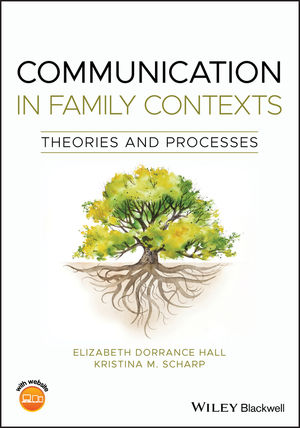The Five Contexts Of Gifts Communication
by Olivia
Posted on 11-08-2020 02:12 AM

Group communication is slightly different to one-to-one communication. There is often more going on in a group, with a number of different people trying to speak to get their point across and their voice heard. Taking turns can be more difficult and relationships and power issues between group members can also be more complicated than in one-to-one contexts.

Given different cultural contexts, this brings new communication challenges to the workplace. Even when employees located in different locations or offices speak the same language (for instance, correspondences between english-speakers in the u. S. And english-speakers in the uk), there are some cultural differences that should be considered in an effort to optimize communications between the two parties.
Btec level 3 in health and social care unit 1: developing effective communication gift coffee mug communication gift for communication in health and social care resources include: - detailed powerpoint presentation on contexts of communication, with a range of tasks. -2x case study hand outs.
Training needs for effective communication gift ideas communication mug communication gift in end-of-life contexts are not currently being met.
Course objectives intercultural communication focuses on the importance of culture in our everyday lives, and the ways in which culture interrelates with and effects gift for communication communication funny mug communication gift ideas processes. We live in an era of rapid globalization in which being able to communicate across cultures is imperative to our ability to function in a diverse workplace, city, and world. This course will take us on a journey. Using our stories and our online discussions, this course is designed to increase our sensitivity to other cultures. Just as importantly, this journey increases our awareness of our own cultural backgrounds, and the contexts (social, cultural and historical) in which we live and communicate.
Students demonstrate understanding of spoken and written communication within appropriate cultural contexts. Examples of this type of “one-way†reading or listening include but are not limited to comprehension of digital texts, as well as printed, audio, and audiovisual materials.
Business Communication for Success
Besides these four types of communication - which are explained below you can also click here to read more articles on effective workplace communication tools and techniques. It is essential that you always place emphasis on communication skills in the workplace.

Words are only a small portion of how we communicate with one another. Yet the value of other forms of communication is often overlooked. Learn more about four different types of communication, and how using them effectively can improve performance, morale, teamwork and success in your business. Communication types and how to improve each one.
Successful communication is a two-way process which requires the management to periodically listen to their staff member’s views and ideas. If the management head does all the talking, employees tend to become lethargic. You need to listen to your employees as they are the ones dealing with the guests on a direct, day-to-day basis. For all you know, they might have ideas to better customer service or improvising of hotel functions if they encounter problems. The best way to listen to your employees is to hold feedback sessions on a weekly basis, take their inputs seriously and reward them. Motivate your hotel staff to help you in taking the hotel business forward.
1.3 Communication in Context
Write1,002 answers
startop subjects are literature, history, and social sciences
context is one of the basic components of human communication. It refers to the setting in which communication is taking place. However, there are several different kinds of communication context to consider. The first is physical context.
 This refers to the tangible environment in which the communication is taking place. It is important to tailor one's communication to the physical area; someone would scarcely speak the same way in a sports bar as they would in a place of worship.
This refers to the tangible environment in which the communication is taking place. It is important to tailor one's communication to the physical area; someone would scarcely speak the same way in a sports bar as they would in a place of worship.
Introduction when academic theorizing addresses everyday communication phenomena, there are losses as well as gains. Research may, selectively or otherwise, partially represent the full subtlety of contextualized interaction. Methodological constraints may impose their own selectivity, so that we tend to access the accessible and learn what is most readily learnable. The real-time nature of programmatic research will reflect epistemological shifts and disciplinary development. It is altogether likely that academic and lay versions of the phenomena themselves and their boundaries will not perfectly mirror each other at any one point.
Social norms also play an important role in verbal communication. The setting, context and people communicating help dictate what is deemed as appropriate conversation. For example, two lovers may find it acceptable to profess their love for each other in private but may not want to do so in public. Certain topics may be acceptable in one circle and not in another. For example, discussing health matters among a group of health care professionals may be acceptable, but that same discussion may not be acceptable at a black-tie political gala.
See also: cross-cultural communication intercultural communication is a discipline that studies communication across different cultures and social groups , or how culture affects communication. It describes the wide range of communication processes and problems that naturally appear within an organization or social context made up of individuals from different religious, social, ethnic, and educational backgrounds. In this sense, it seeks to understand how people from different countries and cultures act, communicate and perceive the world around them.
Classroom communication context: this is a review of an article published in the journal, language, speech and hearing services in schools. The article examines the role that context has on classroom discourse, or classroom communication. The author, kathleen peets, begins by explaining that classroom communication is dramatically different from communication in a child's home.
Share this: facebook twitter reddit linkedin whatsapp cultures differ on the importance and the place of words in communication. In some cultures words are central and the main means of communication. This is low context communication. In other cultures things, apart from words, are very important in communication. Implied meanings arising from the physical setting, relational cues, or shared understandings form an important part of communication. This is high context communication.
Communication: The Importance of Context
Previous next
the concepts of high context and low context refer to how people communicate in different cultures.

8.4 The Context of Communication
Five cs of the world-readiness standards
the five goal areas of the world-readiness standards—communication, cultures, connections, comparisons, and communities—represent goals to be included in the instruction of all world languages. The goals are interconnected signifying that no goal should be addressed in isolation. Although the five cs appear equally significant in the standards' symbol of interlocking rings, it is clear that the communication goal is the heart of the standards as it is the ring at the top center of the graphic. Learning scenarios, such as those included in world-readiness standards for learning languages, provide examples, lessons, and units that interweave the five c's in instructional contexts.

Does My Form of Communication Change in Certain Situations?
Although the term communication implies an interaction between two or more people and transmission of information, communication does not always take place in a fair manner. Monologic and dialogic communications describe two types of communication patterns. The key difference between monologic and dialogic communication lies in the interaction between the speaker and listener; in monologic communication, one person speakes while the other listens whereas, in dialogic communication, the roles of speaker and listener are interchanged within the participants.
Communication in small groups consists of three or more people who share a common goal and communicate collectively to achieve it. During small group communication, interdependent participants analyze data, evaluate the nature of the problem(s), decide and provide a possible solution or procedure. Additionally, small group communication provides strong feedback, unique contributions to the group as well as a critical thinking analysis and self-disclosure from each member. Small groups communicate through an interpersonal exchange process of information, feelings and active listening in both two types of small groups: primary groups and secondary groups.
Interpersonal communication is the process by which people exchange information through verbal and nonverbal messages. It is an unmediated mode of communication that occurs when we interact and attempt to mutually influence each other, simultaneously, in order to manage relationships. Although interpersonal communication can encompass oral, written, and non-verbal forms of communication, the term is usually applied to spoken communication that takes place between two or more individuals on a personal or face to face level. Examples of interpersonal communication include:.
Communication And Internal And External Communication
Barriers to communication impact on the ability of the person to navigate the many facets of life; from doing their own shopping, to attending a medical appointment. These barriers can be described as internal or external to the person.
The Importance of understanding Context in communication
In this month’s newsletter we share some of our knowledge and learning about context. Our latest webinar discusses the importance of context and how to manage it, a blog from our chief executive dr jennifer dixon presents thoughts on how problems created by context can be overcome, and an interview with our improvement science fellow tim draycott explores how gaining a deeper understanding of context could improve how we successfully implement training across the nhs.
The Communication Process & The Elements of Communication
Communication is a two way process, wherein interchange of message connects the sender and receiver, towards an agreed direction, consisting seven elements: sender: otherwise known as a source, it is the person who has something to pass on, to another individual. Encoding: the sender of the message, selects appropriate words or non-verbal techniques to convert the idea into the message, which is called as encoding.
5 Types of Communication
Let us delve deep into the 5 types of communication observed between the group of people or a formal team.
Ready to put your communication plan to paper? writing a project management communication plan is as simple as following these 5 steps: list your project’s communication needs. Every project is different. Take the size of the project, the nature of work being done, and even the client’s unique preferences into account as you determine which types of communication this project needs to succeed.
In the not-too-distant past, there were a limited number of options for long-distance communication: mail, faxes, and telephone calls (and let’s not forget telegrams before that). Today, of course, our options for communication are many and varied. From the moment we awake to the moment we go to sleep, we’re usually within arm’s reach of some sort of electronic device. Whether at work or home, we use tablets and computers for everyday tasks, so we’re constantly able to communicate by email, text messages, social media, video chats, various types of messaging apps, and chat or discussion features built into video games.
Modes of communication[ edit ] amateurs use a variety of voice, text, image, and data communications modes over radio. Generally new modes can be tested in the amateur radio service, although national regulations may require disclosure of a new mode to permit radio licensing authorities to monitor the transmissions. Encryption , for example, is not generally permitted in the amateur radio service except for the special purpose of satellite vehicle control uplinks. The following is a partial list of the modes of communication used, where the mode includes both modulation types and operating protocols.
When you think of communicating with a deaf individual you may think of using sign language or lipreading. These are just two types of communication which can be used. There are many more methods and not all deaf individuals choose to communicate in the same way. Some will change their mode of communication based on who is.
Transmission mode refers to the mechanism of transferring of data between two devices connected over a network. It is also called communication mode. These modes direct the direction of flow of information. There are three types of transmission modes. They are: simplex mode full duplex mode.
29-07-2017 transmission mode means transferring of data between two devices. It is also known as communication mode. Buses and networks are designed to allow communication to occur between individual devices that are interconnected. There are three types of transmission mode:- full-duplex mode in simplex mode, the communication is unidirectional, as on a one-way street. Only one of the two devices on a link can transmit, the other can only receive. The simplex mode can use the entire capacity of the channel to send data in one direction.
2) Non-verbal / Interpersonal communication
Think of how many relationships start with a man and woman making eye contact across a crowded room. A playful wink tends to be more effective than a well-thought out pick-up-line.
sixty teams of two college students each solved credible “real world†problems co-operatively. Conversations were carried on in one of 10 modes of communication: (1) typewriting only, (2) handwriting only, (3) handwriting and typewriting, (4) typewriting and video, (5) handwriting and video, (6) voice only, (7) voice and typewriting, (8) voice and handwriting, (9) voice and video, and (10) a “communication-rich mode. †performance was assessed on three classes of dependent measures: time to solution, behavioral measures of activity, and linguistic measures. Significant and meaningful differences among the communication modes were found in each of the three classes of dependent variable. This paper is concerned mainly with the results of the activity analyses. Behavior was recorded in 21 different categories from which three additional composite categories were formed. The analyses of the behavioral data yielded 51 statistically significant terms. The data support the conclusion that the single most important decision in the design of a telecommunications link should center around the inclusion of a voice channel.
Search
Categories
- Songwriter
- Resident Care
- Retirement
- Runner
- Sailor
- Helmsman
- Grammar Police
- Flight Attendant
- Fisher
- Entertainer
- Editor
- Daily Nutritinionist Facts
- Cyber Security
- Crusader
- Criminology
- Coworker
- Clinical Specialist
- Clinical
- Optometrist
- Logistician
- Magistrate
- Manicurist
- Marines
- Marketer
- Occupation
- Observer
- Officer
- Oncologist
- Painter
- Lifeguard
- Infopreneur
- Nanny
- Cartographer
- Expediter
- ESL Teacher
- Comedian
- Estimator
- Flagger
- Discjokey
- Driving
- Electrologist
- Fumigator
- Erector
- Driller
- Educator
- Dressmaker
- Forensic
- Legislator
- Harvester
- Cooker
- Inspector
- Hacker
- Civil Law
- Employer
- Enologist
- Endocrinologist
- Freelancer
- Enrobing
- Fabricator
- Forecaster
- Clown
- Criminologist
- Collector
- Docent
- Concierge
- Conservator
- Digger
- Dishwasher
- Drafter
- Donor
- Controller
- Communication
- Compounder
- Civil
- Clone
- Doctor
- Cinematographer
- Chiropractor
- Rugger
- Bailbondsman
- Jailer
- Deckhand
- Bellman
- Social Worker
- Babysitter
- Reporter
- Trainer
- Agent
- Embroiderer
- Sociologist
- Pharmacist
- Paramedic
- Insurance
- Teller
- Actuary
- Bailiff
- Coordinator
- Carpenter
- Cleaner
- Academic Dean
- Judge
- Boilermaker
- Clerk
- Apprentice
- Secretary
- Author
- Embalmer
- Hiker
- Cooking
- Deputy Sheriff
- Landscaper
- Photographer
- Pediatrician
- Pilot
- Teacher
- Archivist
- Toolmaker
- Singer
- Racer
- Accounting
- Mentor
- Vice President
- Detective
- Waiter
- Florist
- Broker
- Consultant
- Geographer
- Adjuster
- Auctioneer
- Researcher
- Cardiologist
- Marketing
- Interviewer
- Custodian
- Curator
- Caretaker
- Butcher
- Martial Arts
- Ghostbuster
- Mayor
- Machinist
- Innkeeper
- Mediator
- Conductor
- Demonstrator
- Programmer
- Cabinet Maker
- Planner
- Patient
- Copywriter
- Mechanic
- Surfer
- Employee
- Tour Guide
- Fisherman
- Surveyor
- Manager
- Supervisor
- Appraiser
- Police
- Filmmaker
- Woodworker
- Lecturer
- Inventor
- Liaison Officer
- Laborer
- Translator
- Janitor
- Tailor
- Debater
- Climber
- Politician
- Journalist
- Dietitian
- Firefighter
- Adjudicator
- Producer
- Housekeeper
- Entrepreneur
- Bartender
- Barista
- Hairstylist
- Banker
- Baker
- Electrician
- Therapist
- Astronaut
- Professor
- Architect
- Announcer
- Veterinarian
- Scientist
- Investigator
- Dispatcher
- Creative Writing
- Engineer
- Librarian
- Wanker
- Psychology
- Lieutenant
- Realtor
- Pastor
- Biker
- Nutrition
- Dancer
- Musician
- Gardener
- Farmer
- Counselor
- Boss
- Director
- Dentist
- Lawyer
- Nurse
- Accountant
- Coach
- Advisor
- Beekeeper
- Administrator